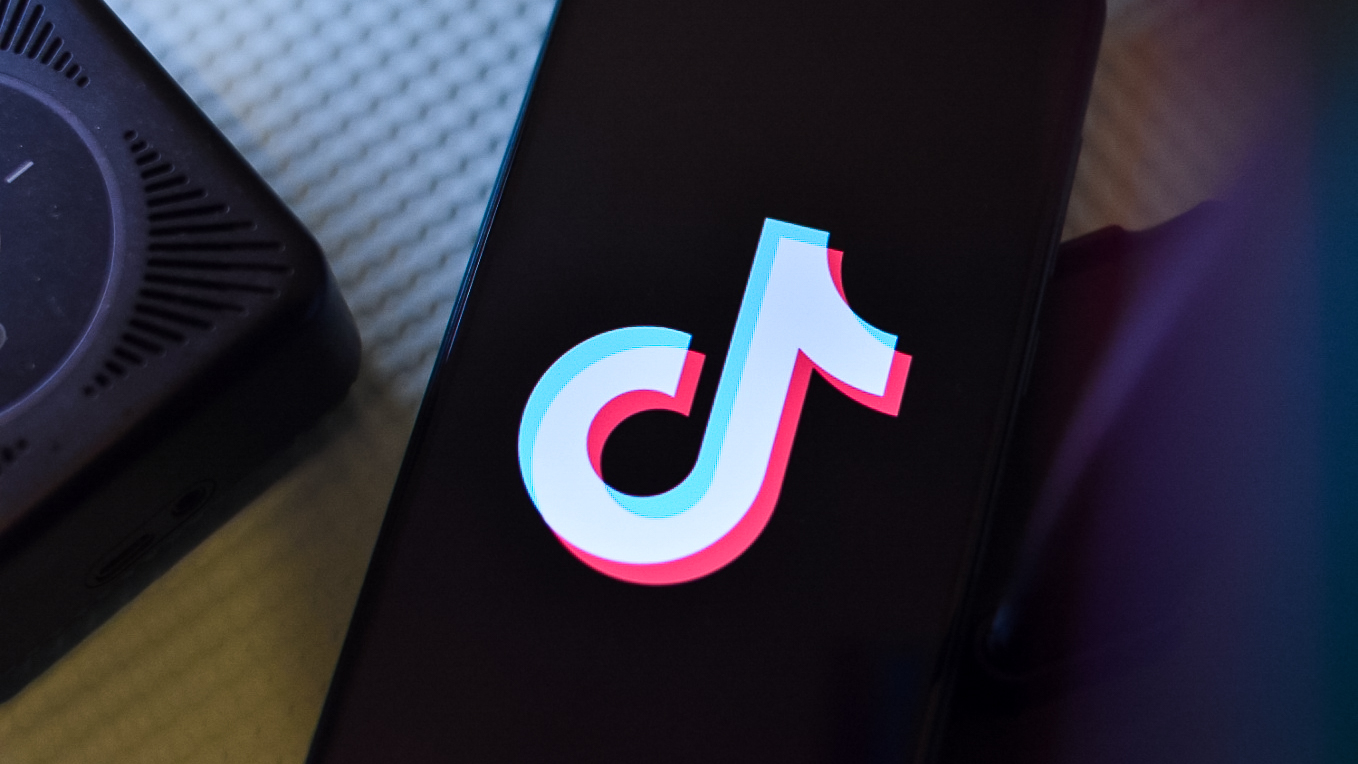A look into Google's Android XR strategy and its big gaming push
Google execs hinted at when we can expect Android smart glasses and headsets, what kinds of features they'll have, and how devs can profit.
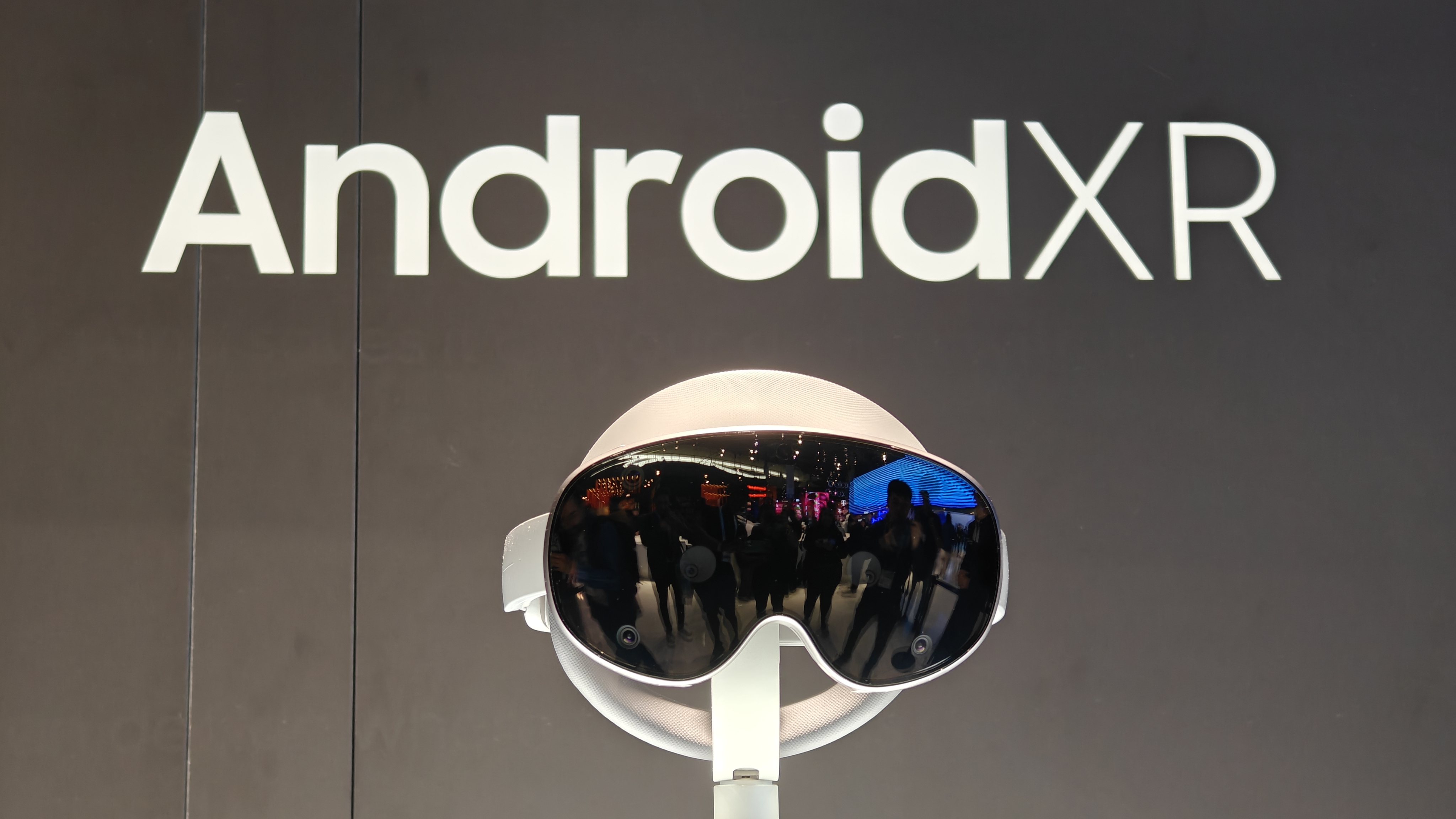
Google had a hefty presence at Augmented World Expo 2025, with several panels dedicated to selling developers on the idea that Android XR will be the next big thing for VR, XR, AR, and smart glasses.
I attended every discussion I could, from the Android XR keynote by Google XR executives Juston Payne and Hugo Swart to a discussion by a gaming developer describing what it's like to make Android XR games, as well as Google executives' vision for the future of AR devices.
Much of the information was familiar, coming from the Android XR roadmap that was revealed at Google I/O last month. But even though Google didn't "announce" anything at AWE, I learned a lot about its strategy to rely on partners like Samsung, Qualcomm, and Unity to court skeptical developers.
Here's every tidbit I gleaned from my AWE 2025 event about Android XR!
An Android XR recruiting blitz for devs
"Google has been working in the glasses space for 10 years, and we have not stopped." Google has been using that line since it announced Android XR last year, and Payne brought it out again at AWE. Google really wants to reassure us that the deaths of Google Glass and Daydream were exaggerated and that Android XR won't end up in the Graveyard.
Payne, who leads Google's XR product management team, said that despite "massive strides forward in both hardware and software," the true "inflection point" for XR has been the rise of multimodal AI and LLMs. They're pushing Gemini as the glue across all VR/AR headsets and smart glasses, and reassuring developers that they can access Gemini to simplify their own XR apps.
"AI will do for XR products what the touchscreen did for smartphones," Payne argued. And since devs can access the Gemini API through the Firebase AI Logic SDK, they may be tempted to join Android XR and experiment with multimodal AI for their apps.
Get the latest news from Android Central, your trusted companion in the world of Android
You can currently only code Android XR apps for VR headsets like Moohan, but Google will open up software for smart glasses "later this year," and it's also working with Samsung and glasses designers like Warby Parker to "ship the first set of smart glasses soon."
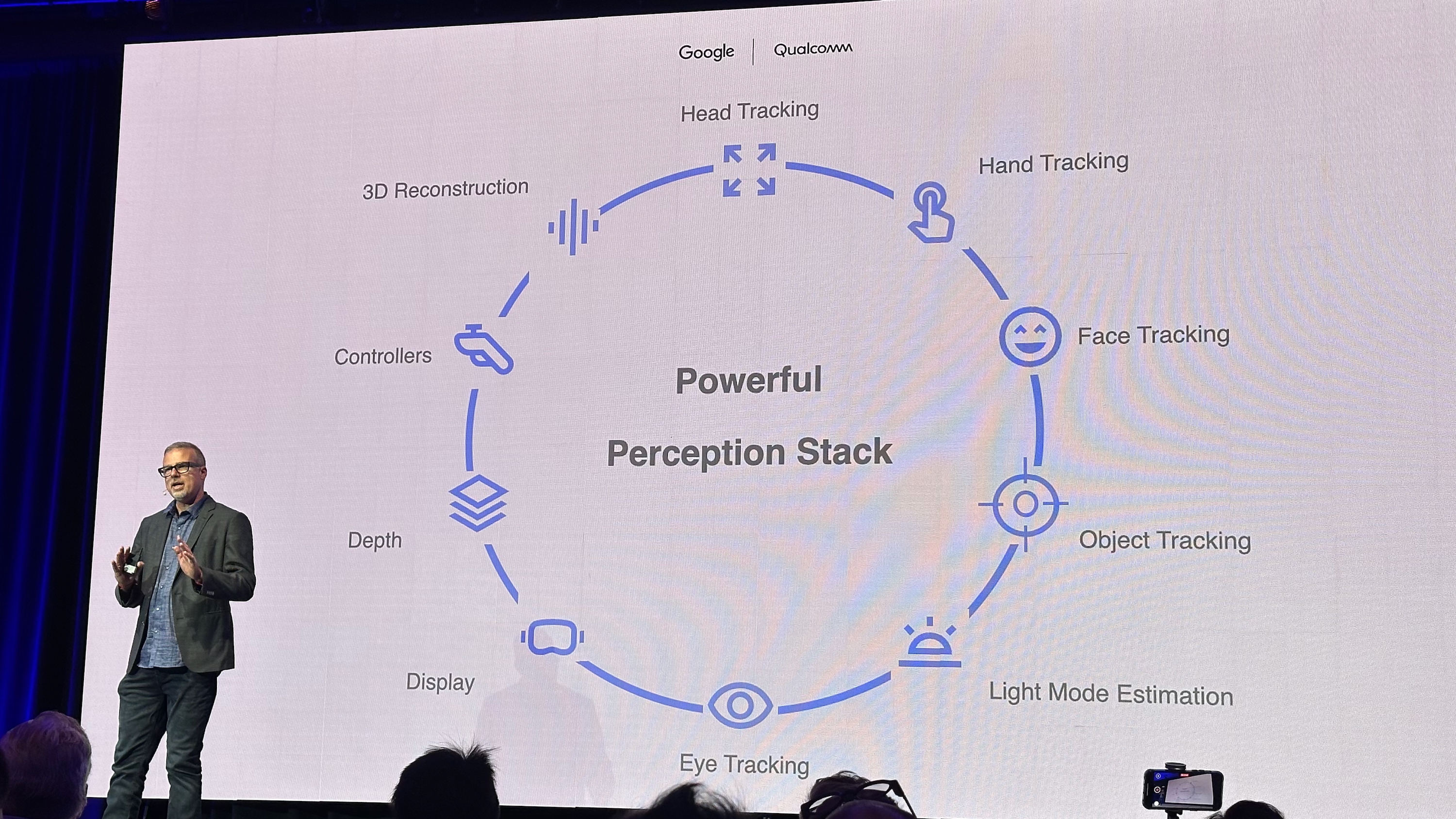
Hugo Swart, a senior XR director at Google, followed Payne on stage to sell Android XR to devs the same way it sells Android on phones: make one app for a variety of devices and let Google handle the "technology stack" along with Samsung and Qualcomm.
"It takes a village to make [Android XR] happen," Swart says, and he called on "ODMs, camera sensor and module vendors, display lens waveguide makers, and app developers and content providers" to build up Android XR into a successful platform that can "scale to a diversity of products," from premium XR to lightweight glasses.
Android XR will have core "perception stack" tools like head/eye/face/hand tracking, controllers, depth perception, and 3D reconstruction that will work across all devices "without fragmenting." Devs can create one app with one SDK that'll port to headsets and glasses, saving them development time.
Plus, Google is "deeply integrating and optimizing our code to Snapdragon," so that Android XR works natively on chips like the Snapdragon AR1+ that support on-device AI for smart glasses. At least for now, we shouldn't expect any Tensor-powered Android XR devices.
What to expect from gaming on Android XR
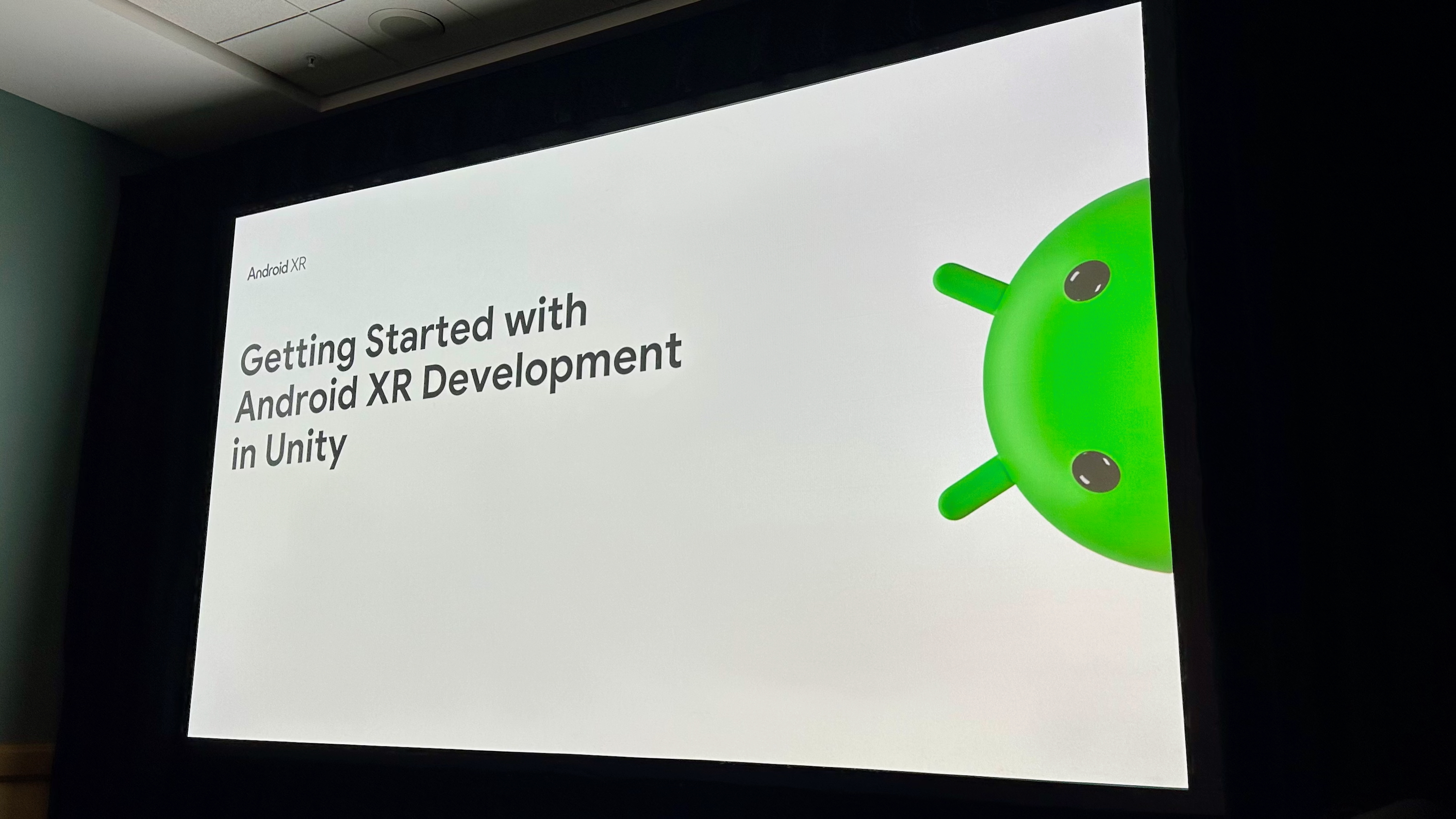
We know that Android XR supports controllers, Unity, and the OpenXR standard behind most of the best Meta Quest games. But after Android XR was a no-show at GDC 2025, I wondered what Google's plan was to support gaming devs on its new platform.
It turns out many of the biggest VR game devs like Owlchemy Labs and Resolution games have already ported to Android XR using Unity 6, which supports OpenXR input handling and a Universal Render Pipeline (URP) for graphical compatibility.
I attended an AWE panel by Mirrorscape, an Android XR Early Access Program developer bringing its "Fallout Factions XR" game to Android XR later in 2025, to get insights into what it's like porting games to the platform.
The CEO, Grant Anderson, described the "godsend" of designing for a virtual space instead of a "little rectangle," aka your phone. Mirrorscape coded using Unity, which has an "AR foundation" for features like plane tracking and hand gesture recognition, while targeting the OpenXR standard behind most VR games.
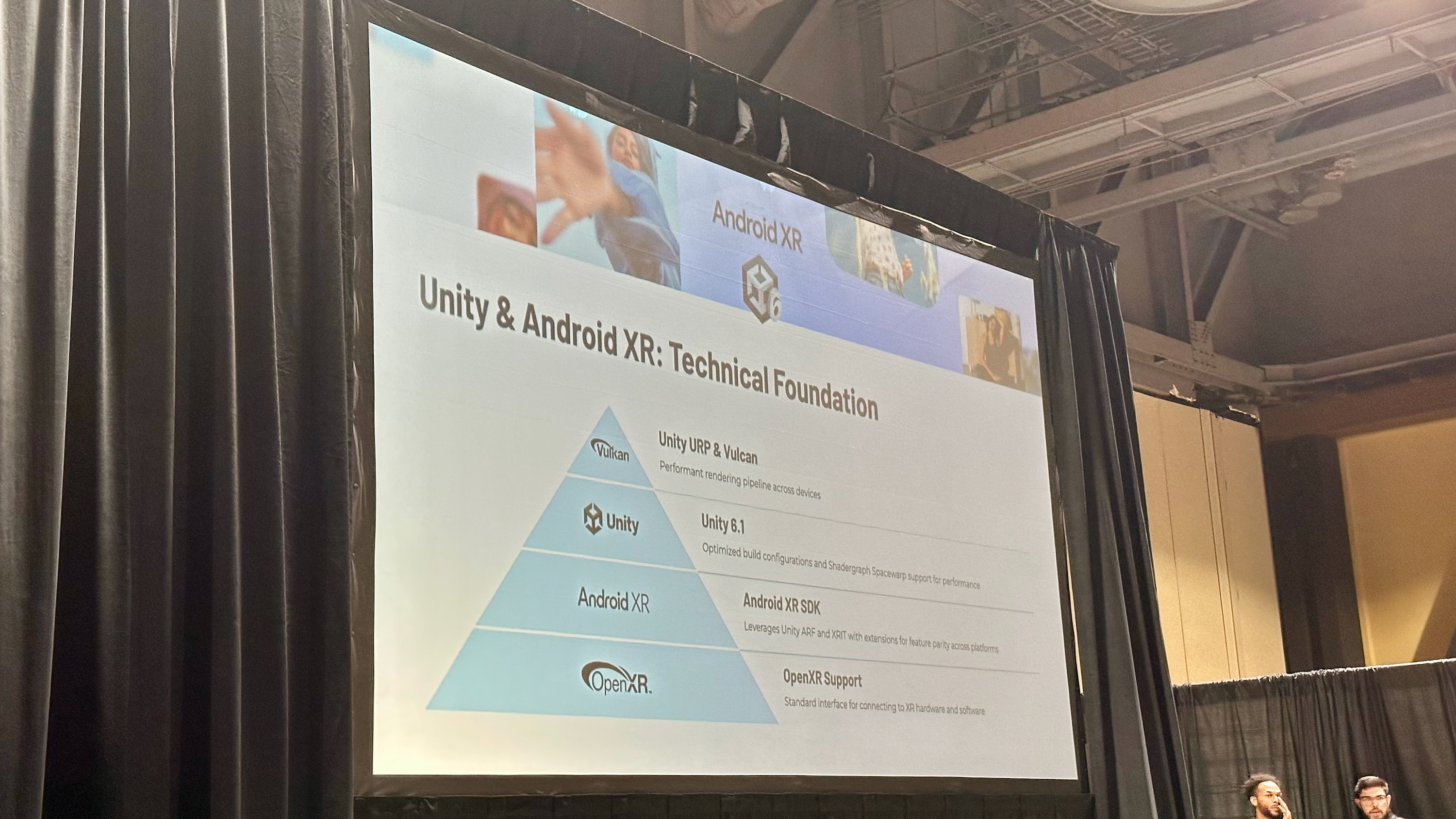
While Unity does its best to make the conversion to Android XR painless, he warned that "adapting to architectural changes and new rendering pipeline requirements in Unity 6 can be a heavy lift and take some time."
He also noted that "there's not a lot of Android XR headsets out there" right now, nor an emulator for virtual testing. Until the Samsung Moohan headset or Google reference AR glasses become widely available, devs must build their own reference hardware to check their XR apps, which sounds challenging.
Plus, devs have to optimize for Snapdragon XR2 hardware, relying on tricks like Spacewarp and foveated rendering. But Quest VR devs should find this familiar.
The last pain point he mentioned was that the Android XR SDK gets frequent updates in alpha, which can cause "package conflicts" between it and Unity without constant firmware updates. Presumably, this will become less of an issue once Android XR reaches stability.
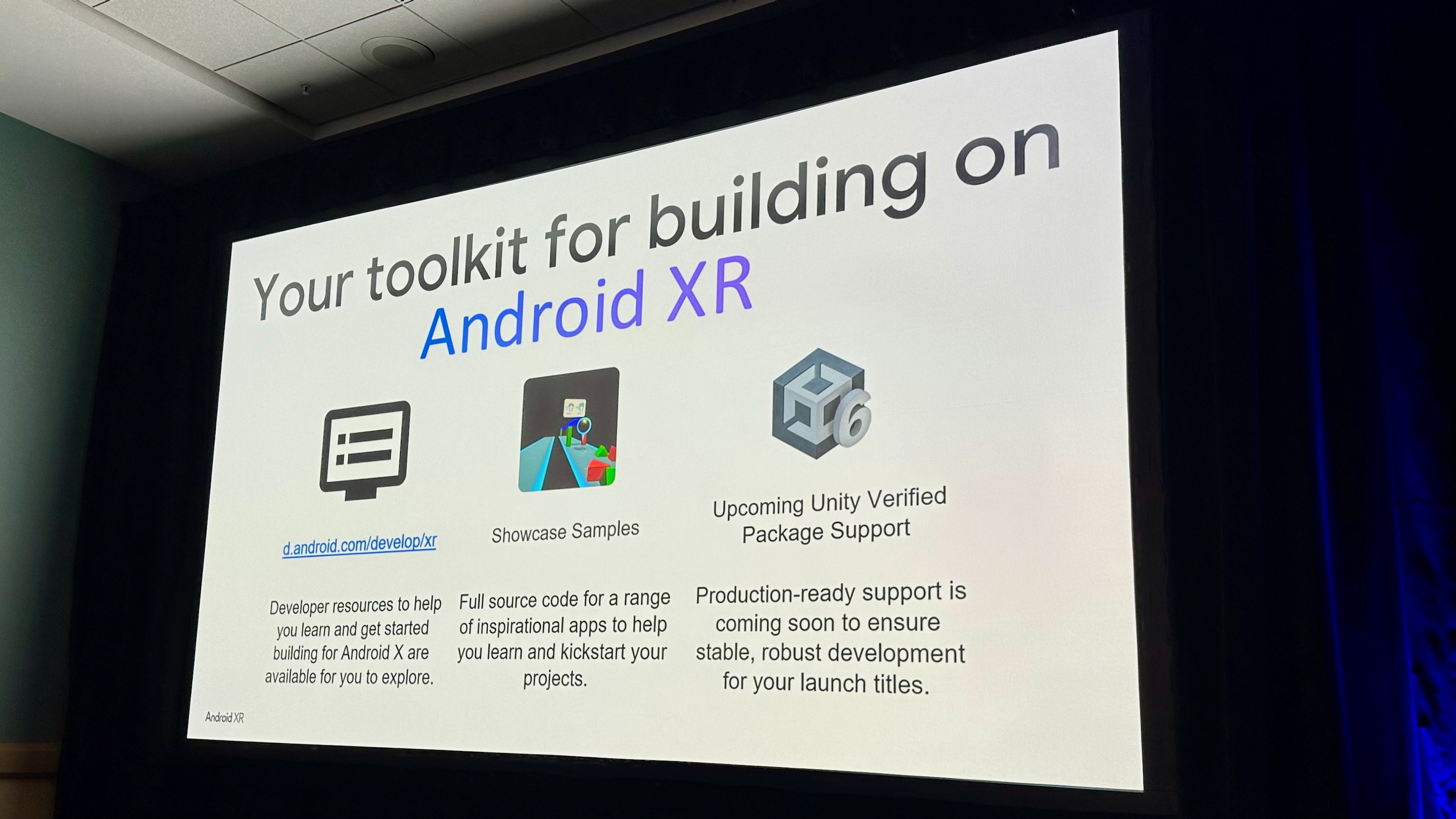
Unity and Google co-hosted a separate AWE panel on "Getting Started with Android XR Development in Unity." And according to Google project manager Ryan Bartley, you can work in-headset to update your XR game, "iterating on your work in seconds with changes from the Unity Editor appearing instantly on your headset." That sounds pretty handy!
Features like the passthrough API, plane detection, and hand tracking are all demonstrated through Unity packages, or "showcase samples," so that devs can apply the source code to their own games. And anyone who used the Snapdragon Spaces SDK for past XR experiences can migrate to Android XR using the compatibility plugin.
That is to say, many current VR experiences should be capable of a quick Android XR transition, though Unreal Engine games won't have as easy a conversion process.
I also learned that Google has held "four Android XR developer boot camps across the globe." Some Quest devs have complained about Google excluding them, so I'm curious if Google (or Samsung) will expand these boot camps or leave smaller devs to rely on Unity.
Counting on devs to join Android XR now and profit later
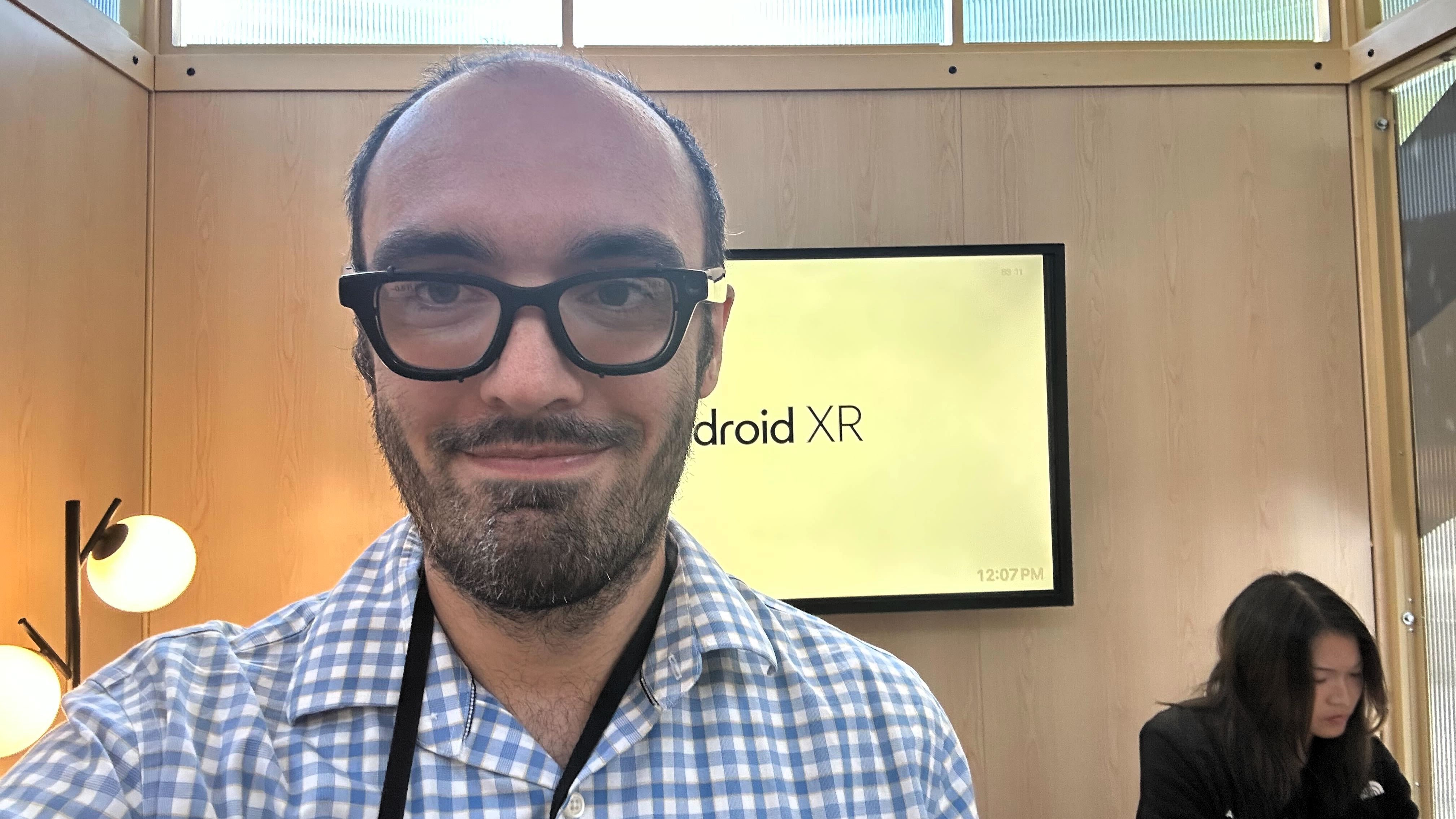
I attended several panels about the future of AR glasses at AWE with Google and Meta execs, and Google's team is counting on devs being tempted by their open system and easy transition.
XREAL's Ralph Jodice said that anyone coding for Android XR now can be on their Project Aura headset right now, "and you should be." The idea is that devs' familiarity with Android will make the transition to Android XR easy, and once you optimize your app, it'll work across the entire "ecosystem" of devices as they arrive.
That said, Google needs to assure devs that they'll get a return on investment. Killing Stadia, Daydream, Cardboard, and other services has given Google a reputation, which is why Swart promised during his panel that Google is "committed to investing in the ecosystem." And Samsung's involvement makes it harder for Google to pull the plug unless its Korean partner decides to give up.
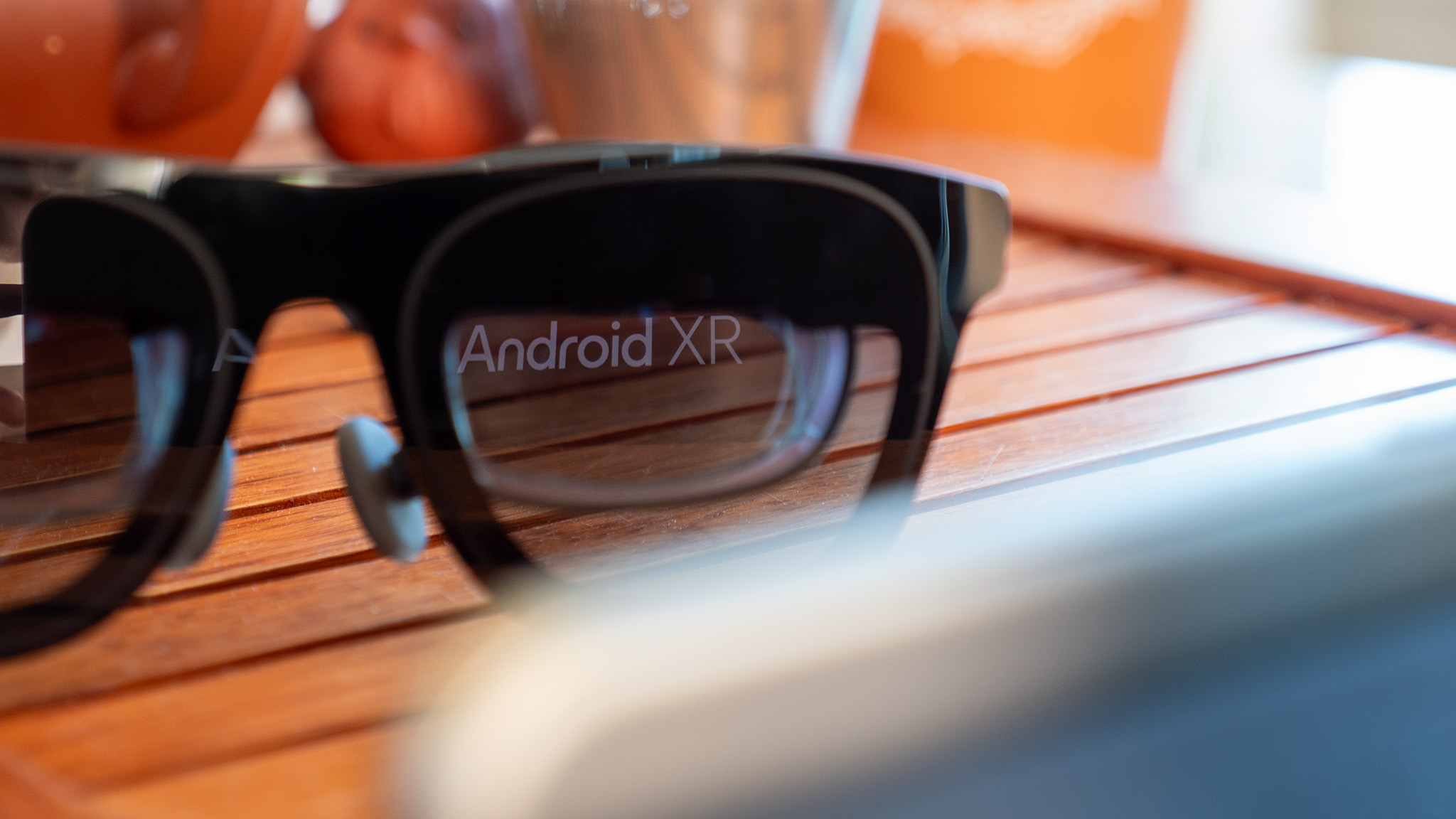
The other issue is that we only know of Project Moohan, XREAL Project Aura, and a handful of other niche Android XR devices from Sony and others; none of them will be as affordable as the Meta Quest 3S. As open as Android XR is, devs need assurances that enough people will buy their apps to make the transition worth it.
Meta's Kelly Ingham made that point during her smart glasses panel: their smart glasses system isn't open to people yet, but their "focus" is to "get as many devices in the market as we can" so devs can "develop an app and actually make money." It felt like a subtle jab at Android XR.
Swart promised that future Qualcomm reference devices for Android XR will be tailored "to a variety of use cases and price points" so ODMs can "balance visual quality and price." So perhaps we'll see an influx of affordable Android XR devices that go beyond elite productivity headsets.
Until then, it's hard to say whether VR and XR devs will buy into Android XR's open-platform promise or wait for more concrete hardware from Google's partners.

Michael is Android Central's resident expert on wearables and fitness. Before joining Android Central, he freelanced for years at Techradar, Wareable, Windows Central, and Digital Trends. Channeling his love of running, he established himself as an expert on fitness watches, testing and reviewing models from Garmin, Fitbit, Samsung, Apple, COROS, Polar, Amazfit, Suunto, and more.
You must confirm your public display name before commenting
Please logout and then login again, you will then be prompted to enter your display name.

